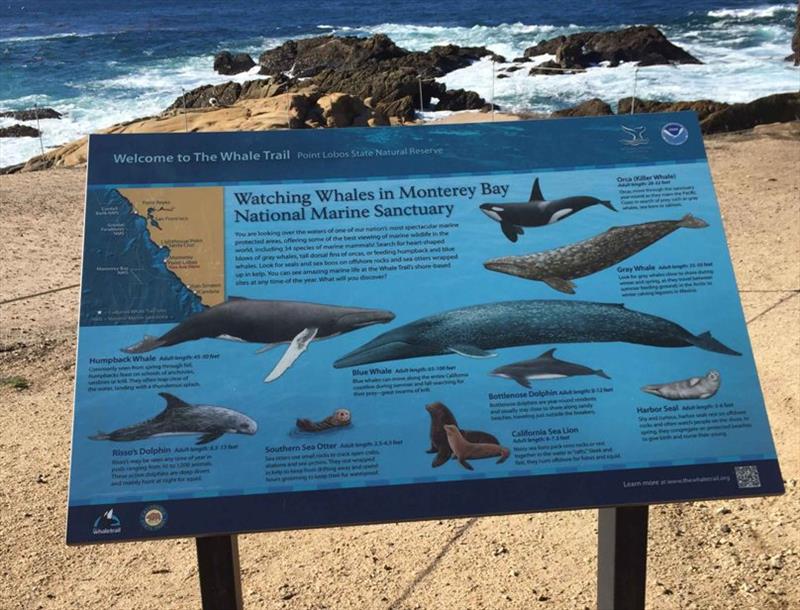
Organizations rally for Orca Awareness Month
by NOAA Fisheries 12 Jul 2018 12:34 UTC

An interpretive sign installed by The Whale Trail at Point Lobos State Reserve in California, recognizing that the area is in the range of Southern Resident Killer Whales © The Whale Trail
This year's Orca Awareness Month comes at a critical time for the Southern Resident killer whales of the West Coast and Salish Sea, as communities rally to support the long-lived but troubled marine mammals.
The governors of both Oregon and Washington signed proclamations declaring June Orca Awareness Month. The dual declarations recognize recent research that has shown that as much as the whales are identified with Puget Sound and the Salish Sea, their winter travels as far south as the San Francisco Bay Area make them truly a West Coast species.
Underscoring that, The Whale Trail is adding a series of interpretive signs along the Northern California Coast to help boost awareness of the Southern Residents through that part of their range, said Executive Director Donna Sandstrom. Partners including NOAA Fisheries formed The Whale Trail in January 2008, starting with 16 interpretive sites in Washington State. Now The Whale Trail includes more than 90 sites spanning the West Coast from California to British Columbia.
All residents of the West Coast states have a role to play in helping protect the whales and their habitat. NOAA Fisheries has designated the critically endangered Southern Residents one of eight national "Species in the Spotlight," where focused attention aims to help bring about their recovery. Orca Awareness Month further helps focus that attention through events such as World Oceans Day, June 30, at the Oregon Coast Aquarium, in Newport, Oregon.
"This is a chance to share the concern we all have about the whales, but also to recognize there are things we all can do to help them," said Lynne Barre, recovery coordinator for the Southern Residents in NOAA Fisheries' West Coast Region. The Seattle Aquarium has a helpful web page with a top ten list of things people can do to help the whales, including links to organizations that are always looking for volunteers. "Concerned citizens can report sightings, learn about and help spread guidance for responsible boating, or even get their hands dirty working on a habitat restoration with a group like Whale Scout."
Barre serves on an Orca Task Force convened by Washington Gov. Jay Inslee to pursue recovery actions for the whales. As part of Orca Month she recently gave a presentation at a local coffee shop with partners to share information about the whales, threats to their survival, and actions people can take to help with their conservation. She notes that education and outreach to raise awareness during Orca Month and all year long are critical elements of a coast wide and comprehensive recovery program.